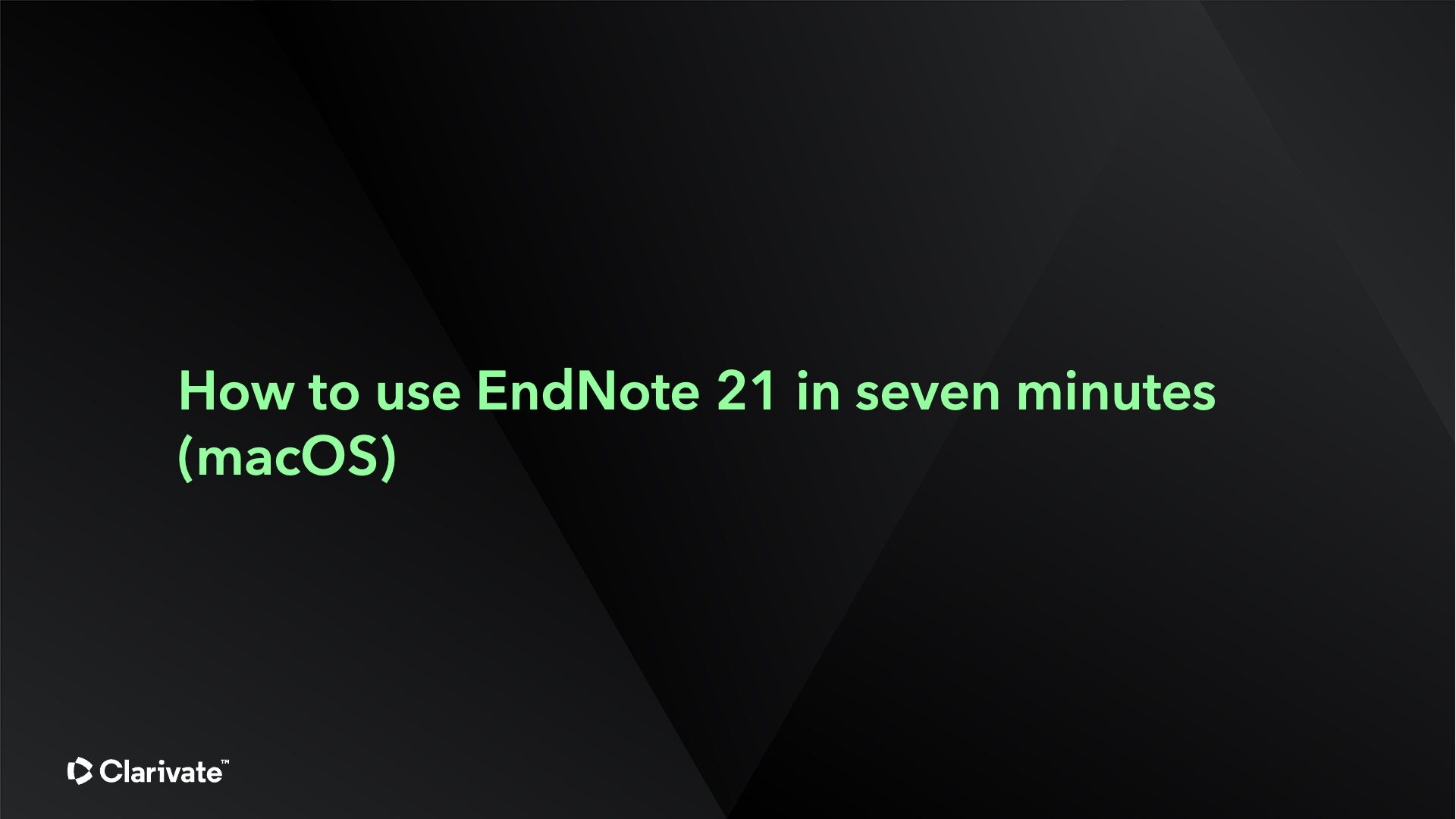Here is an overview of EndNote 21 on Mac:

Many issues with Mac and EndNote come down to compatibility errors and not having the most current EndNote version on your device. See the link to EndNote's Knowledge Base for troubleshooting.
Once you have downloaded EndNote software onto your Mac it is easy to install. Just drag the icon into your Applications folder. After EndNote is fully installed, double click the EndNote icon to open the program. The default location for the EndNote folder is in the Application folder on your hard drive.
The first screen asks if you want to integrate it with your MyEndNoteWeb. Choose the third option "Not at this time."
The next screen opens a dialog box that offers three options:
Learn about EndNote
Create a new library
Open an existing library
If you are a first-time EndNote user, choose "Create a new library." If you are already an EndNote user, go ahead and select "Open an existing Library." The default title is "MyEndNoteLibrary." You must select the location where this file lives, e.g., your desktop, documents folder etc. It doesn't matter where you put it, but you'll need to be able to find the library when you start exporting files to it. It is best to have only one MyEndNote Library for all your citations.
You will also need to set up your Preferences so that the CSUS proxy server and link resolver will recognize you as one of our students or faculty and the databases will correctly export into EndNote. See the instructions below.
For Macintosh users: Setting up EndNote Preferences is done slightly differently than on a PC
1. Open EndNote and click EndNote in the top menu bar.
2. Select the Preferences option under EndNote X8

3. When the window shown below opens, click on Find Full Text and fill in the boxes.
You can cut and paste from the items 1. and 2. below so that your screen matches the image below or just type in the following URLs:
1. Open URL Path: http://link.calstate.edu/sacramento
2. URL: http://proxy.lib.csus.edu/login?url=
3. Click Save

If you don't do this set up, the exported files go directly into your download folder instead of into EndNote and all you will see is a text file.
The first time you Export citations from a particular database you must choose a path for the data to reach EndNote.
More detailed instructions can be found on the EndNote Support & Services pages by searching for the phrase: "EndNote Mac: Configuring Firefox Direct Export."
Below are some helpful guides from other libraries on EndNote and Mac setup.
